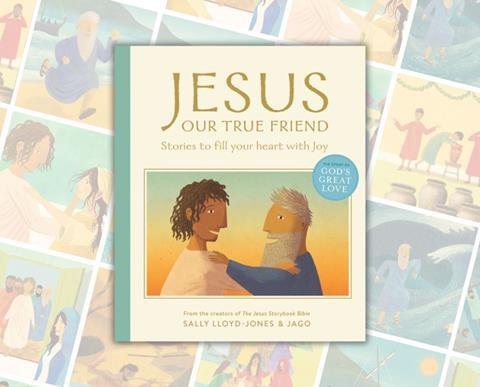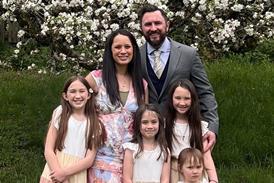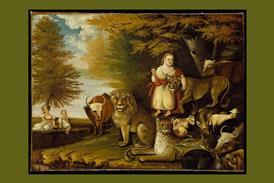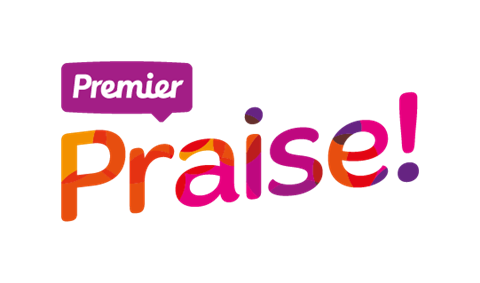Sally Lloyd-Jones speaks about how the grace and friendship of Jesus drove the writing of her latest book for children

Tell us about your book Sally - who’s it for? What do you want it to achieve?
The book really comes from my experience as a little girl who got the idea that I had to be good for God to love me. In all the things we’ve given children, I sometimes wonder if we’ve forgotten to give them hope. Children of course need our guidance in all sorts of things, but when it comes to their devotional lives, they don’t need to be told to do it better, try harder, believe more. That only leaves them in despair. The moral code always leaves us in despair. We can never live up to it. We don’t need a moral code. We need a rescuer. I wanted children to know that God loves them, they don’t have to be good for God to love them. I want them to know that Jesus is their friend, that he sees them, he knows them, and he loves them even when they mess up or everything goes wrong.
You talk about God as a friend to children; how do you think children best understand that idea of friendship?
I didn’t set out with this theme of friendship, it emerged as I wrote. I started writing different stories and saw a thread: friendship. The book sort of knew what it needed to be. As books so often do.
Children know what a friend is. As a little child my dad told me that Jesus would be my best friend, and I understood what that meant. I knew absolutely what that meant. A friend is someone who is there for you, who loves you and likes you. It is the opposite of thinking of God as a hard taskmaster, who is waiting to catch you out. If you want to know the true heart of the Father, all you have to do is look at Jesus.
It isn’t simple to be simple! It requires you to do the hard work of ensuring you understand it so well that you can convey it to a child. I think it is simplistic when you haven’t done that work
How did you choose the stories to include?
There were stories I’d never retold before that I always wanted to retell, like the older brother in the prodigal son, the son that thinks because he’s doing everything right, God owes him. But he’s just as far away from the Father’s heart as the son who is doing everything wrong. That story in particular moved me ever since I read Tim Keller’s book The Prodigal God and also Helmet Theilecke’s The Waiting Father. I wanted to take on the challenge of telling that story to children. Some stories, like the wedding at Cana and the Good Samaritan, I’d wanted to retell for years and then I also included Jesus restoring Peter, because it’s so moving. A friend pointed out that three of the stories in the book—The Good Samaritan, the older brother, and the wedding at Cana—were the pillars of Tim and Kathy Keller’s ministry in New York and I hadn’t even realised that.
How do you negotiate the tension between expressing theological truth and writing clearly for children?
There’s a difference between simple and simplistic. Being simple is distilling the story down into words that a young person can understand. It isn’t simple to be simple! It requires you to do the hard work of ensuring you understand it so well that you can convey it to a child. I think it is simplistic when you haven’t done that work.
Another guide for me has been Luther: when he was translating the Bible into German, he said to get the right tone he needed to go into homes and listen to a mother speaking to her children. That’s it completely. Like a mother speaking to her children. That gave me the tone I needed.
Also, the other wonderful thing is, if you don’t dumb things down, if you make it simple but not simplistic you end up catching the adult as well – as C.S. Lewis put it: “a children’s story that can only be enjoyed by children is not a good children’s story in the slightest.”
the story of the woman caught sinning is basically about an angry mob of bullies, and all children know about bullying. If you tell the truth, it crosses boundaries
The stories you use are 2,000 years old, do you deliberately think about the difference between the culture then and the life of children today?
I don’t really think about that. My job is to write the best story I can write. If you tell a story well, those barriers go away. Friendship, people, and love, those truths haven’t changed. For instance, the story of the woman caught sinning is basically about an angry mob of bullies, and all children know about bullying. If you tell the truth, it crosses boundaries.
What do you see as the power of stories?
The mistake people make with children is summarising stories and giving bullet points. When you do that, you kill the magic. A story is a question, not an answer. A story opens up a child to wonder and awe. The best thing is to let the story do its work and trust the Holy Spirit. My job is to get out of the way, let the story through and then let God do the rest.
Take the feeding of the five thousand. You could finish that story with a lesson about how we should share things, but that drills the story down into a moral lesson. But what if instead, you simply wondered aloud alongside the children: “What would happen if I gave Jesus everything I have?” That’s a holy moment. Parents and children, teachers and children, all be sitting together, wondering at the love of the Father, at the beauty of the gospel.
Read more:
3 reasons for Christian parents to reach again for the Chronicles of Narnia
Hear our Hearts - A new resource to help Christian Grandparents pray for their grandchildren and their grandparenting
Abigail and the Waterfall: A beautiful way for Christian parents to encourage their children to care for God’s creation
How does this book relate to your previous books for children like The Jesus Storybook Bible?
It’s adjacent to The Jesus Storybook Bible and Thoughts to Make Your Heart Sing, but with more depth and maybe a bit more sophistication. These stories aren’t always easy to retell, but I think they reach any child (and their grownups) from four or five and up with another facet of the gospel.
Do you think about how your stories will be received in different countries around the world?
Not really. A powerful story transcends culture. We’re all story-shaped beings. I just focus on writing for one child, and if I get that right, hopefully it speaks to all children. It’s amazing that my books are being translated into so many languages. I never imagined that.
As adults, we’re so efficient and serious, but sometimes we just need to sit and let a picture book and its lyrical language and beauty speak to our hearts
What’s been the impact of writing the book on you?
Writing each story is like a mini revival, you soak yourself in the theology until it moves you. Robert Frost said, “No tears in the writer, no tears in the reader.” It is mysterious but it is true. The book is about God’s presence, not our performance. He’s with us in the storm, coming to us, he doesn’t leave us, he doesn’t turn away. That’s been so encouraging to me.
Is there anything else you’d like to say about the book?
Though I didn’t write it for adults, I’ve heard from many who say, “I really needed that.” As adults, we’re so efficient and serious, but sometimes we just need to sit and let a picture book and its lyrical language and beauty speak to our hearts. Jago’s illustrations are wonderful. Over the years, both his art and my writing have grown, and I think the older you get, the more poignant these truths become.





























